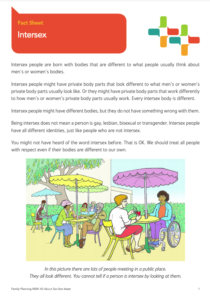As your child grows up, they will develop their own unique personality and identity. Learning about who they are and trying different things is important for any child growing up. Your support at this time can help your child to become increasingly independent while at the same time building confidence that will help to keep them safe.
Content tab block
Conversation Starters
I noticed you were looking at the woman in the poster. Do you think she’s attractive?
I want you to be able to express yourself in a way that you’re comfortable with. Can we figure out together how you can do that safely?
There’s a new dating show on TV. What do you think about the people on that show?






